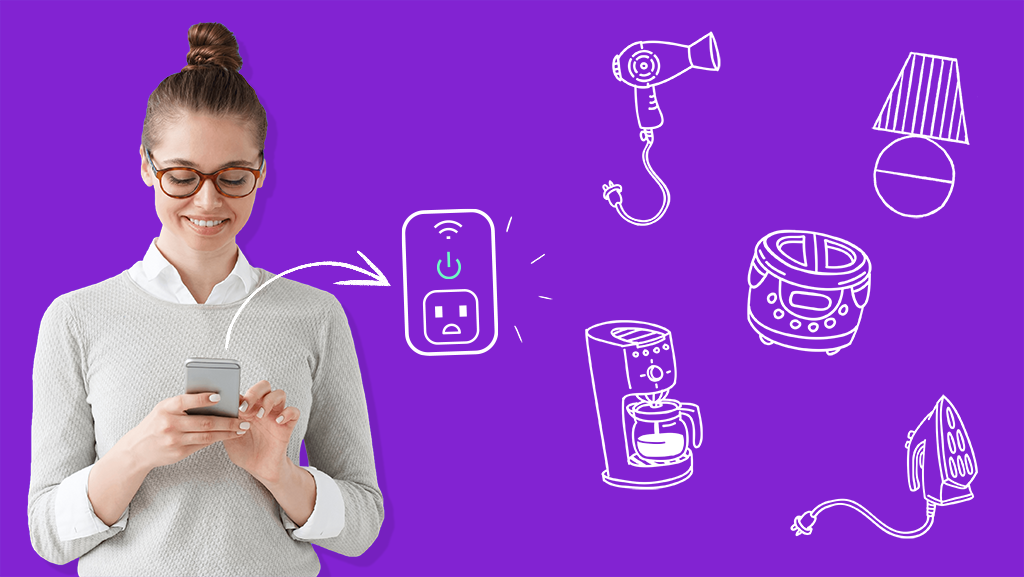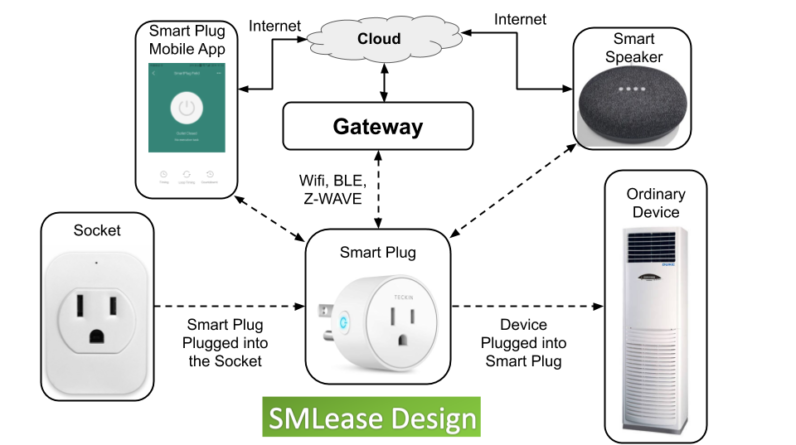
Have you ever wondered how smart plugs and outlets work, and what exactly you can use them for? Well, wonder no more! In this article, we will explore the fascinating world of smart plugs and outlets, uncovering their inner workings and discovering the wide variety of purposes they serve. From controlling your home appliances remotely to creating personalized schedules, these smart devices are here to make your life easier and more convenient. So, let’s plug right in and explore the endless possibilities of smart technology!
Types of Smart Plugs and Outlets
Wi-Fi-enabled Smart Plugs
Wi-Fi-enabled smart plugs are one of the most popular types of smart plugs available on the market today. These plugs use your home’s Wi-Fi network to connect to your smartphone or other smart devices. With Wi-Fi-enabled smart plugs, you can control your electrical devices remotely, schedule their operation, and even monitor their energy consumption. These plugs typically come with their own mobile apps that allow you to easily manage and control your devices from anywhere.
Bluetooth-enabled Smart Plugs
Bluetooth-enabled smart plugs work similarly to Wi-Fi-enabled plugs but use Bluetooth technology for communication instead. These plugs are typically more limited in terms of range and require your smartphone or tablet to be within close proximity. However, they are often more energy-efficient and offer faster response times compared to Wi-Fi-enabled smart plugs. Bluetooth-enabled smart plugs are a great choice if you are looking for a reliable and secure connection without the need for an internet connection.
Zigbee-enabled Smart Plugs
Zigbee-enabled smart plugs utilize the Zigbee wireless communication protocol to connect with other smart devices in your home. Zigbee is a low-power, mesh network protocol that allows for reliable, long-range communication between devices. With Zigbee-enabled smart plugs, you can create a network of interconnected devices, making it easy to control multiple appliances and devices simultaneously. These plugs often require a dedicated Zigbee hub or gateway to connect to your Wi-Fi network and other smart home systems.
How Smart Plugs and Outlets Work
Wireless Communication Protocols
Smart plugs and outlets use various wireless communication protocols to connect with your smartphone, tablet, or other smart devices. The most common protocols include Wi-Fi, Bluetooth, and Zigbee. Each protocol has its own advantages and limitations, so it’s important to choose the one that best suits your needs. Wi-Fi offers a wide range and fast data transfer speeds, while Bluetooth allows for low-power communication over short distances. Zigbee, on the other hand, provides a reliable and secure connection over long distances.
Smartphone or Voice Control
Once you have connected your smart plugs or outlets to your wireless network, you can control them using your smartphone or tablet. Most smart plugs come with their own mobile apps that allow you to turn on or off your devices, schedule their operation, and even monitor their energy consumption. Additionally, many smart plugs are compatible with voice assistants such as Amazon Alexa or Google Assistant, allowing you to control your devices using voice commands.
Automation and Scheduling
One of the key features of smart plugs and outlets is the ability to automate the operation of your electrical devices. Through the mobile apps or voice assistants, you can set up schedules for when your devices should turn on or off. For example, you can schedule your coffee machine to start brewing your favorite coffee just before you wake up or your lights to turn on automatically when you arrive home in the evening. This automation not only adds convenience to your daily life but also helps you save energy and reduce your electricity bills.
Power Monitoring and Energy Management
Another useful feature of smart plugs and outlets is the ability to monitor and manage the energy consumption of your devices. With the help of the mobile apps, you can see real-time energy usage data, track historical data, and even set energy-saving goals. This information allows you to identify energy-hungry devices and make informed decisions to optimize your energy usage. Some smart plugs even offer the ability to set budget alerts, so you will be notified when a specific energy threshold is reached.
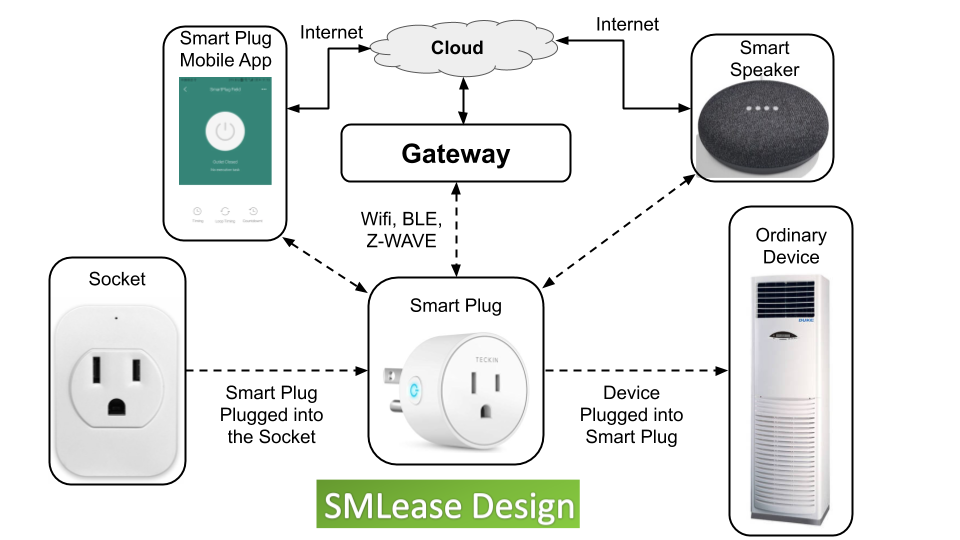
Setting Up and Using Smart Plugs and Outlets
Choosing Compatible Devices
When setting up smart plugs and outlets, it’s important to choose devices that are compatible with your existing electrical appliances and smart home systems. Before making a purchase, check the compatibility requirements of the smart plug or outlet to ensure it will work seamlessly with your devices. Additionally, consider the maximum load capacity of the plug or outlet to make sure it can handle the power requirements of your devices.
Installation and Configuration
The installation process for smart plugs and outlets is usually straightforward and does not require professional assistance. Simply plug the smart plug into a standard electrical outlet, and follow the instructions provided by the manufacturer to connect it to your wireless network. Most smart plugs and outlets have a built-in setup wizard that guides you through the configuration process, making it quick and easy to get started.
Connecting to Wi-Fi or Bluetooth
For Wi-Fi-enabled smart plugs, connecting to your home’s Wi-Fi network is essential for remote control and automation features. The setup wizard of the smart plug will guide you through the process of connecting to your Wi-Fi network, usually by entering your network credentials. Bluetooth-enabled smart plugs, on the other hand, automatically establish a connection with your smartphone or tablet using Bluetooth technology when they are in close proximity.
Pairing with Smart Home Systems
If you have a smart home system or hub, you may need to pair your smart plugs or outlets with it for seamless integration. Most smart plugs support popular smart home systems such as Amazon Alexa, Google Assistant, or Apple HomeKit. To pair your smart plugs with your smart home system, follow the instructions provided by the manufacturer or refer to the documentation of your smart home system.
Controlling Devices via Mobile Apps
Once your smart plugs and outlets are set up and connected to your wireless network, you can start controlling your devices using the mobile apps provided by the manufacturer. The mobile app allows you to turn on or off your devices remotely, create schedules for automation, monitor energy consumption, and even group devices together for simultaneous control. The intuitive user interface of the mobile app makes it easy to manage and control your devices from anywhere in the world.
Integrating with Voice Assistants
To enhance the convenience and hands-free control of your smart plugs and outlets, consider integrating them with voice assistants such as Amazon Alexa or Google Assistant. Most smart plugs are compatible with these voice assistants, allowing you to control your devices using simple voice commands. For example, you can say “Alexa, turn off the living room lights,” or “Hey Google, turn on the coffee machine.”
Safety Considerations
Certifications and Standards
When purchasing smart plugs and outlets, it’s important to look for certifications and standards that ensure safety and reliability. The most common certifications for electrical devices include UL (Underwriters Laboratories) and FCC (Federal Communications Commission) certifications. These certifications indicate that the products have undergone rigorous testing and comply with industry standards for safety, performance, and electromagnetic interference.
Overload Protection
To prevent overloading and potential damage to your electrical devices, many smart plugs and outlets come with built-in overload protection. These safety features automatically detect abnormal current flow and shut off the power supply to prevent overheating or electrical malfunctions. Overload protection ensures that your devices are safe to use and minimizes the risk of electrical hazards.
Fire and Electrical Hazards
Using electrical devices always carries some risk of fire or electrical hazards. However, smart plugs and outlets are designed with safety in mind and often incorporate features to reduce these risks. Look for smart plugs and outlets that are made from fire-resistant materials and have built-in surge protection to protect your devices from power fluctuations. Additionally, always follow the manufacturer’s instructions and guidelines for safe usage and installation.
Remote Access Security
With the convenience of remote access and control comes the need for proper security measures. When setting up your smart plugs and outlets, ensure that you follow best practices for network security, such as using strong passwords, enabling encryption, and keeping your firmware up to date. Additionally, choose smart plugs and outlets from reputable manufacturers that prioritize security and provide regular firmware updates to address any vulnerabilities.
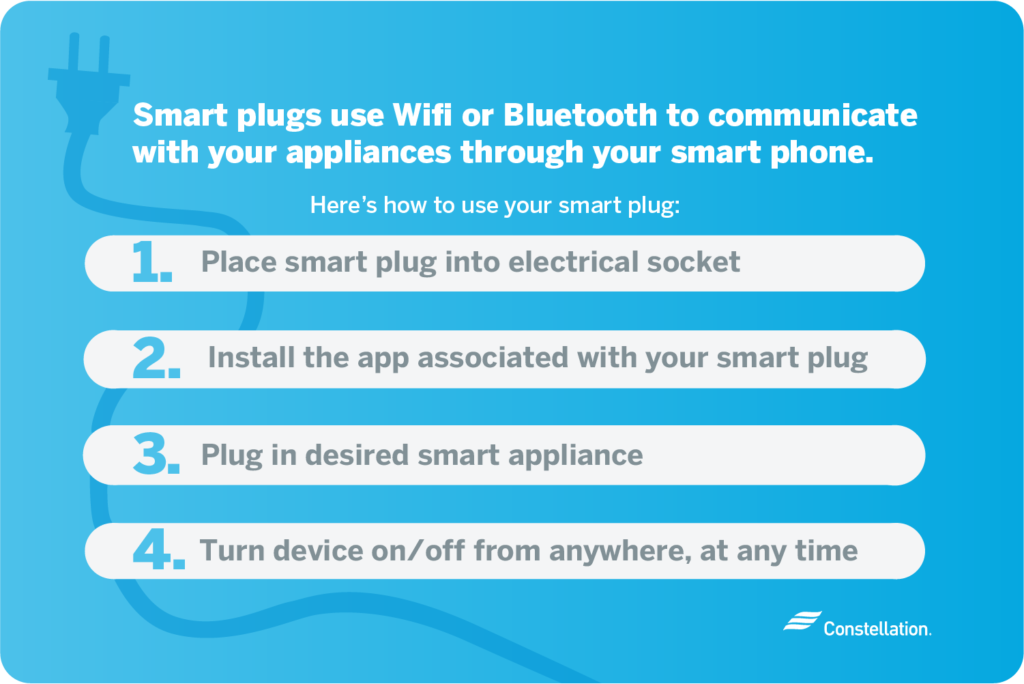
Applications of Smart Plugs and Outlets
Energy Efficiency and Cost Savings
One of the primary benefits of using smart plugs and outlets is the ability to optimize your energy usage, leading to increased energy efficiency and cost savings. By scheduling the operation of your devices and monitoring their energy consumption, you can identify energy-hungry appliances and make adjustments to reduce energy waste. For example, you can set your air conditioning unit to turn off automatically when you leave the house or schedule your washing machine to run during off-peak hours when electricity rates are lower.
Home Automation and Convenience
Smart plugs and outlets enable home automation by allowing you to control your devices remotely and set up schedules and routines. This automation adds convenience to your daily life by eliminating the need to manually turn on or off your appliances and lights. With a simple tap on your smartphone or a voice command to your voice assistant, you can have your coffee ready, your lights turned on, and other devices activated without lifting a finger.
Security and Safety
Smart plugs and outlets can also enhance the security and safety of your home. By setting up schedules for your lights and other devices, you can create the illusion of occupancy when you are away, deterring potential burglars. Additionally, some smart plugs have a “vacation mode” feature that randomly turns devices on and off to further simulate occupancy. Smart plugs can also be used for fire prevention by automatically shutting off devices such as irons or space heaters after a set period of inactivity.
Monitoring and Control during Absence
When you are away from home, smart plugs and outlets allow you to monitor and control your devices remotely. This feature provides peace of mind by enabling you to check if you left any appliances on or off and turn them off or on as needed. For example, you can remotely turn on your lights before arriving home to ensure a well-lit entryway or turn off your appliances if you forgot to do so before leaving.
Smart Entertainment Systems
Smart plugs and outlets are also useful for creating smart entertainment systems in your home. By connecting your TV, sound system, and other entertainment devices to smart plugs, you can control them using your smartphone or voice assistants. This allows you to turn on or off your entertainment system with a simple voice command or create custom routines, such as dimming the lights and turning on the TV when it’s time for movie night.
Smart Plugs and Outlets in Different Areas of the Home
Living Room and Smart Entertainment System
In the living room, smart plugs and outlets can be used to control your smart TV, soundbar, gaming consoles, and other entertainment devices. With the ability to schedule their operation or control them remotely, you can ensure that your devices are turned off when not in use to save energy and reduce standby power consumption. Additionally, having your entertainment system connected to smart plugs allows for easy integration with voice assistants and smart home systems, providing a seamless and immersive home entertainment experience.
Kitchen and Appliances
In the kitchen, smart plugs and outlets can be used to control various appliances, such as coffee machines, toasters, microwaves, or slow cookers. With the ability to schedule their operation, you can have your coffee or breakfast ready as soon as you wake up or have a warm meal waiting for you when you arrive home. Smart plugs also offer the convenience of controlling your appliances remotely, so you can turn on your slow cooker while at work and come home to a delicious, perfectly cooked meal.
Bedroom and Lighting Control
In the bedroom, smart plugs and outlets can be used to control your lights, bedside lamps, or even electric blankets. With the ability to create schedules or control them remotely, you can set the mood for relaxation or create a gentle wake-up routine. For example, you can schedule your bedside lamp to gradually dim as you fall asleep or slowly brighten in the morning to mimic the rising sun. Smart plugs and outlets offer a convenient and personalized lighting experience tailored to your sleep patterns and preferences.
Home Office and Power Management
In the home office, smart plugs and outlets can be used to manage power consumption and ensure the efficient operation of your devices. By scheduling the operation of your computer, printer, and other office equipment, you can save energy and reduce electricity bills. Additionally, some smart plugs offer the ability to monitor energy consumption, allowing you to identify energy-hungry devices and make informed decisions to optimize your energy usage.
Outdoor and Garden Applications
Smart plugs and outlets are not limited to indoor use and can also be used for various outdoor and garden applications. They can be used to control outdoor lighting, sprinkler systems, or even electric grills or power tools. With the ability to control your outdoor devices remotely or set up schedules, you can ensure that your outdoor area is well-lit and your garden is watered at optimal times. Smart plugs and outlets add convenience and efficiency to your outdoor spaces, making them more enjoyable and functional.
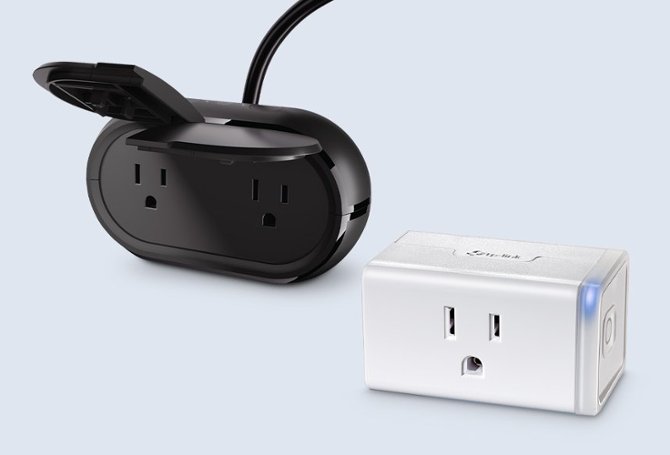
Interactions with Other Smart Devices
Integration with Smart Speakers and Voice Assistants
One of the key advantages of smart plugs and outlets is their compatibility with smart speakers and voice assistants. By integrating your smart plugs with devices such as Amazon Echo or Google Home, you can control your electrical devices using simple voice commands. This seamless integration allows for a more intuitive and hands-free control experience, enhancing the convenience and accessibility of your smart home.
Compatibility with Smart Home Systems
Smart plugs and outlets can easily be integrated into existing smart home systems, allowing for a cohesive and interconnected smart home experience. Many smart plugs support popular smart home systems such as Amazon Alexa, Google Assistant, or Apple HomeKit, enabling you to control your devices alongside other smart devices in your home. This interoperability allows for more advanced automation and customization options, making your smart home truly personalized to your preferences.
Interconnectivity with Smart Lighting Systems
When it comes to smart lighting, smart plugs and outlets can play a crucial role in creating a comprehensive lighting control system. By connecting your lights to smart plugs, you can easily control them using your smartphone or voice commands. For example, you can create lighting scenes or routines that combine the control of smart plugs and smart bulbs, allowing you to control both your lighting fixtures and other devices simultaneously. Smart plugs provide a flexible and versatile way to incorporate lighting control into your smart home setup.
Interaction with Smart Thermostats
Smart plugs and outlets can also interact with smart thermostats to enhance energy efficiency and comfort in your home. By connecting your heating or cooling devices to smart plugs, you can set up schedules or automation routines that coordinate with your smart thermostat. For example, you can have your air conditioner turn off automatically when you open a window or have your heating system turn on just before you arrive home. This integration enables a more efficient use of energy and helps maintain a comfortable temperature in your home.
Integration with Security Systems
Smart plugs and outlets can be integrated into your home security system to enhance its functionality. By connecting your security cameras, motion sensors, or alarm systems to smart plugs, you can automate their operation and create routines that enhance your home’s security. For example, you can schedule your security lights to turn on automatically when the motion sensors detect movement or have your cameras start recording when your alarm system is triggered. Smart plugs provide another layer of control and automation to your home security setup, adding convenience and peace of mind.
Popular Smart Plugs and Outlets on the Market
TP-Link Kasa Smart Plug
The TP-Link Kasa Smart Plug is a highly rated and popular choice among smart home enthusiasts. It supports both Wi-Fi and voice control, making it compatible with voice assistants such as Amazon Alexa and Google Assistant. The Kasa mobile app offers a user-friendly interface for controlling and monitoring your devices, as well as setting up schedules and energy-saving modes. The TP-Link Kasa Smart Plug also offers energy monitoring features, allowing you to track and optimize your energy usage.
Belkin Wemo Mini Smart Plug
The Belkin Wemo Mini Smart Plug is another well-regarded option for smart home automation. It features compatibility with both Wi-Fi and voice control, making it easy to integrate into your existing smart home setup. The Wemo app provides a simple and intuitive interface for controlling your devices and creating custom schedules. The Belkin Wemo Mini Smart Plug also offers energy monitoring capabilities, allowing you to keep track of your energy consumption and make informed decisions to save energy.
Amazon Smart Plug
The Amazon Smart Plug is a popular choice for those who are heavily invested in the Amazon Alexa ecosystem. This plug seamlessly integrates with your Alexa devices, allowing you to control your devices using voice commands. The setup process is straightforward, and the Alexa app provides a user-friendly interface for managing your devices and creating routines. Although it lacks energy monitoring features, the Amazon Smart Plug offers convenience and compatibility with the extensive range of Alexa-enabled devices.
iDevices Switch Smart Plug
The iDevices Switch Smart Plug is a versatile and feature-rich option for smart home enthusiasts. It supports both Wi-Fi and voice control, making it compatible with popular voice assistants such as Amazon Alexa, Google Assistant, and Apple HomeKit. The iDevices app offers advanced automation features, allowing you to create complex rules and conditions for controlling your devices. Additionally, the iDevices Switch Smart Plug features energy monitoring capabilities, making it easy to track and optimize your energy usage.
Sengled Smart Plug
The Sengled Smart Plug is a reliable and affordable option for those looking to start their smart home journey. It supports both Wi-Fi and voice control, making it compatible with popular voice assistants such as Amazon Alexa and Google Assistant. The Sengled Home app provides a user-friendly interface for controlling and scheduling your devices. While it does not offer energy monitoring features, the Sengled Smart Plug offers a budget-friendly solution for smart home automation and control.
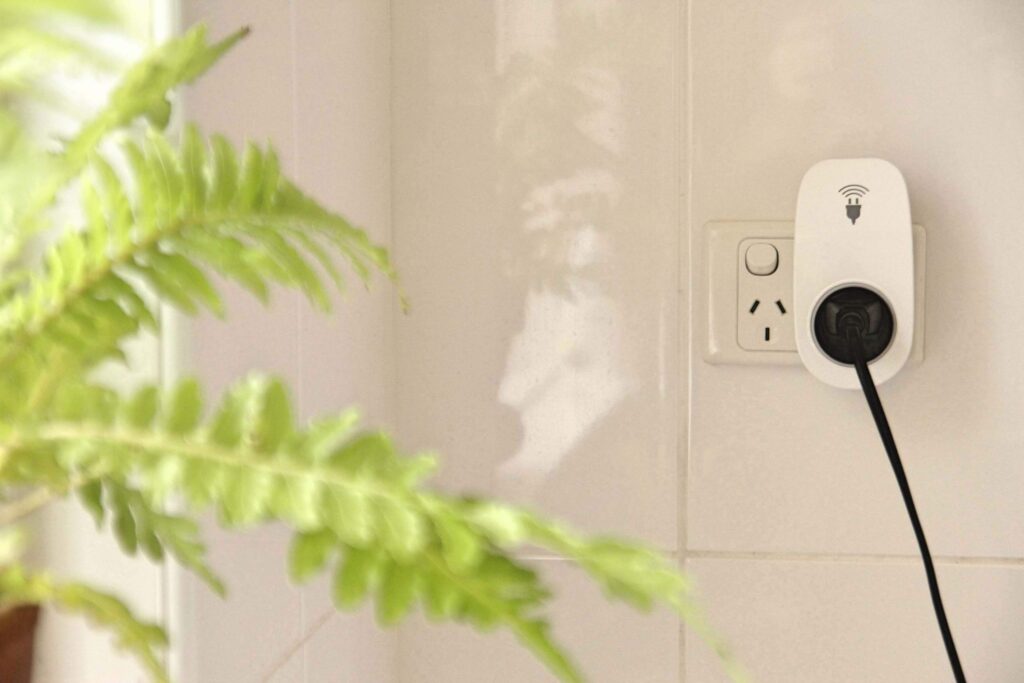
Future Trends and Advancements
Improved Energy Monitoring and Optimization
As technology continues to advance, we can expect to see smart plugs and outlets with even more advanced energy monitoring capabilities. These future devices may provide more detailed energy consumption data, allowing for better optimization and energy-saving practices. Additionally, advancements in artificial intelligence and machine learning may enable smart plugs to automatically adjust power settings based on usage patterns, further optimizing energy efficiency.
Integration with Renewable Energy Systems
As renewable energy becomes more prevalent, smart plugs and outlets may play a significant role in integrating renewable energy systems into our homes. These future devices may have the ability to monitor and manage the power generated from solar panels or wind turbines, allowing for better control and utilization of renewable energy. This integration would enable homeowners to make more informed decisions regarding energy consumption and maximize the benefits of renewable energy sources.
Enhanced Compatibility and Interoperability
With the increasing popularity of smart home technology, there is a growing demand for improved compatibility and interoperability between different devices and systems. Future smart plugs and outlets may feature enhanced compatibility with a wide range of smart home systems, voice assistants, and other smart devices. This interoperability would facilitate seamless integration and communication between devices, providing a more cohesive and streamlined smart home experience.
Smarter Automation and Artificial Intelligence
Future smart plugs and outlets may incorporate more advanced automation features and artificial intelligence capabilities. These devices may be able to learn and adapt to your daily routines, automatically adjusting their operation based on your preferences and usage patterns. For example, a smart plug could learn that you typically use your coffee machine at a certain time in the morning and start brewing your coffee without any input from you. This level of automation would further enhance the convenience and efficiency of smart home technology.
Increased Security Features
As smart home technology continues to evolve, the security of smart plugs and outlets will remain a top concern. Future devices may incorporate enhanced security features, such as advanced encryption algorithms, biometric authentication, or built-in intrusion detection systems. These security measures would provide greater protection against unauthorized access and ensure the privacy and safety of your smart home.
Conclusion
Smart plugs and outlets have revolutionized the way we interact with and control our electrical devices. With their wireless connectivity, automation capabilities, and compatibility with voice assistants, they offer a convenient and efficient way to manage our homes. Whether it’s optimizing energy usage, enhancing home security, or adding convenience to our daily lives, smart plugs and outlets have a wide range of applications that can benefit every area of your home. As technology continues to advance, we can look forward to even more exciting features and advancements in smart plugs and outlets, making our homes smarter and more sustainable.
